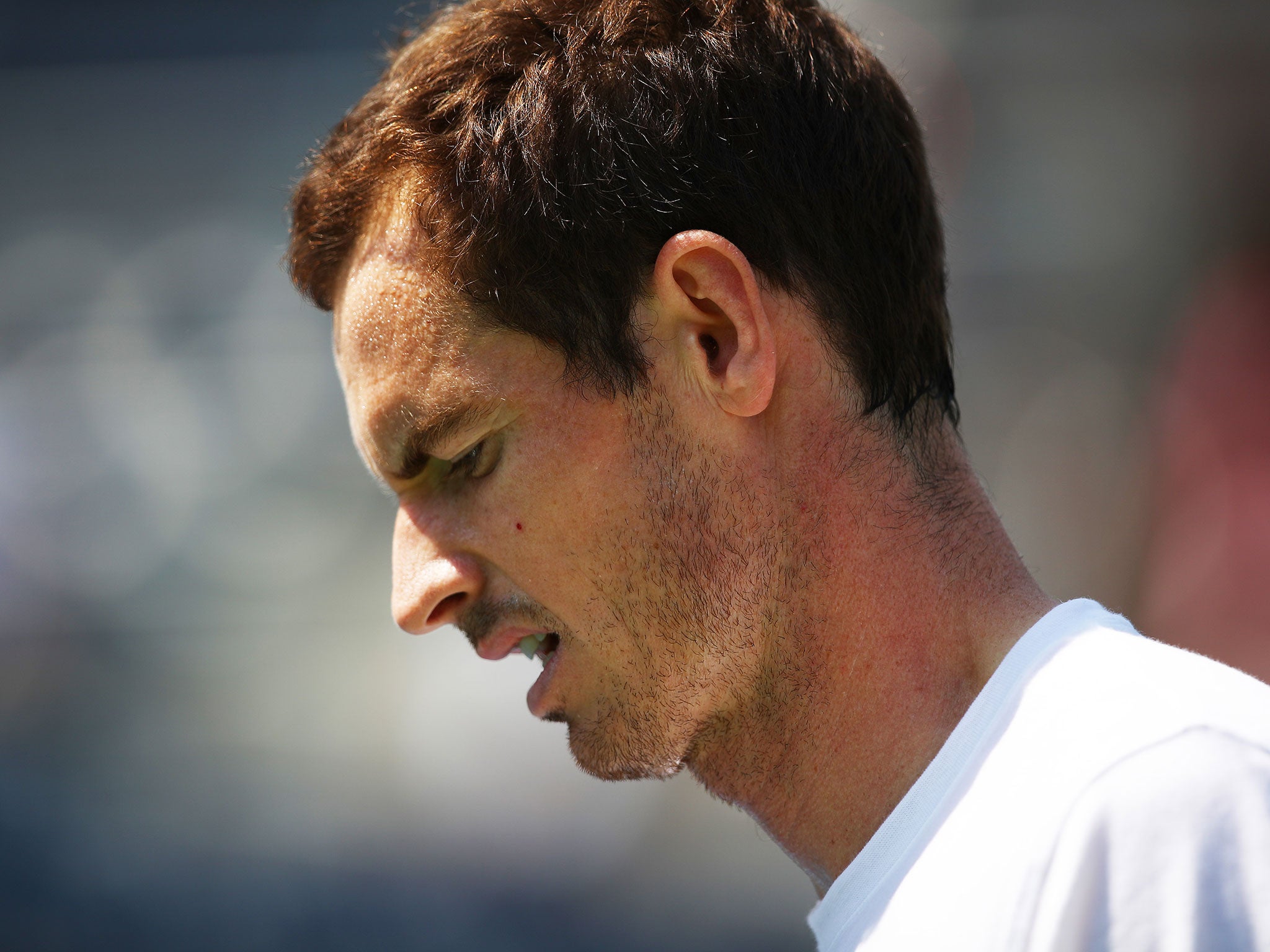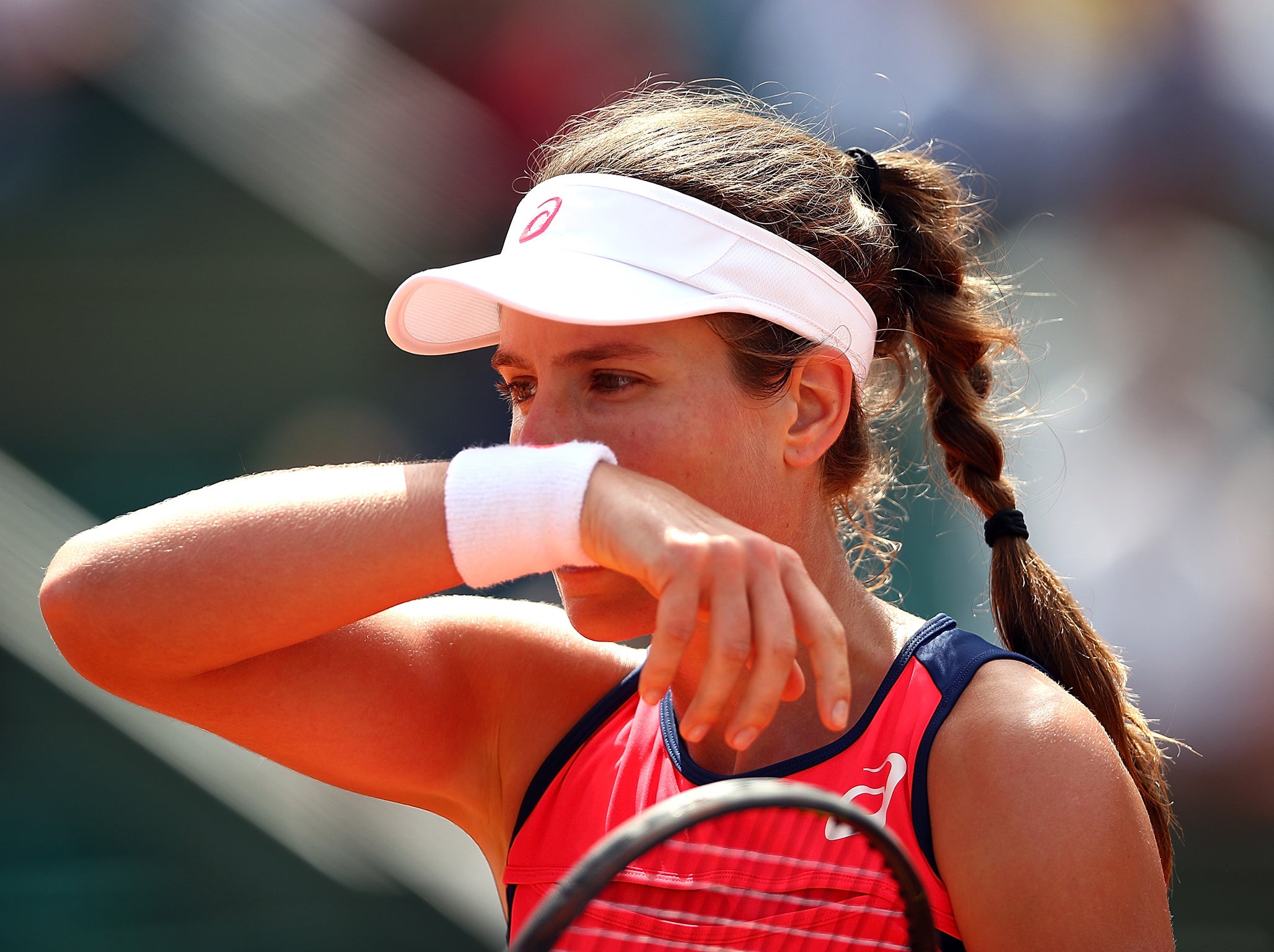Life after Andy Murray a bleak prospect for British tennis
Britain enjoyed a golden summer last year but the present paints a rather different picture. Once the three-time Grand Slam winner steps down, who will fill the void?

Rewind one year and British tennis was bathing in the afterglow of a golden summer of success. With a second Wimbledon title and Olympic gold medal to his name, Andy Murray's unabated march to world No 1 was in full swing. The Briton's eventual coronation came in November, beating rival Novak Djokovic to confirm his status as the sport's best male player.
Meanwhile, Johanna Konta was busy making a name for herself after years spent flying under the radar. After her breakthrough at the Australian Open, where she reached the first Grand Slam semi-final of her career, Konta would end the summer as the first British woman since Jo Durie to enter the world top 10. She eventually brought her season to a close as the WTA's Most Improved Player of the Year.
Gordon Reid, Jamie Murray, and Heather Watson all similarly enjoyed notable success in their respective careers – the latter being crowned Mixed Doubles champion at Wimbledon alongside Henri Kontinen – while Dan Evans and Kyle Edmunds made promising steps forward.
But the present paints a rather different picture. After the heady heights of 2016, British tennis finds itself looking forward to an uncertain future – one that offers no real indicator of where the next champion will come from.
In light of Roger Federer and Rafael Nadal’s recent resurgence, and their refusal to follow Father Time into retirement, questions remain over what exactly lies in store for Murray as he continues to recover from a persistent hip injury.
A notoriously resilient individual, the 30-year-old’s propensity for fighting to the bitter end will no doubt see him bounce back from his recent setback. But as a player who has relied on physicality and power throughout his career, rather than transcendent skill, age is unlikely to treat him well in the same way it has Federer.
The real issue is not one of injuries or form, though, but succession. With Murray approaching the back end of his career, no contender to his British throne has yet to emerge. At 47 in the rankings, Edmund, Britain’s current No 2, has shown few real signs of preparing himself for life post-Murray. The 22-year-old has age on his side but has not come close to replicating the success of the Scot who, at the same age, had already reached a Grand Slam final and picked up two Masters titles along the way.

In Evans, any hope of British success seems slim at best. Repeated off-court transgressions have tarnished the career of a 27-year-old who once flashed with genuine promise and his recent one-year ban points to a player that, like the proverbial leopard, looks unlikely to change his spots.
For now, it seems, Konta carries the burden of British expectation on her shoulders. Her recent form leaves plenty to be desired – she has won just two matches in her subsequent five tournaments since Wimbledon – but the 26-year-old is undoubtedly Britain’s best female player for decades. Having worked her way up the rankings to world No 7, Konta is rubbing shoulders with the sport’s elite and her impressive run at SW19, where she reached the semi-finals, bears testament to what she is capable of.
But while she continues to lead the charge in the women’s field, her British compatriots have struggled to find their feet. Watson’s Mixed Doubles success at Wimbledon in 2016 suggests a career away from singles competition might be better suited to her, while injury and bad luck have hampered the promise Laura Robson showed in her earlier days. The pair seem caught on repeat, struggling in vain to break through into the upper echelons of the sport, consigned instead to the fringes of the women’s tour.

It’s not all doom and gloom, though, with a number of British young guns already catching the eye. Jay Clarke, 19, currently stands as the best of the next men’s generation coming through. After that, Jack Draper, 15, is reckoned to be the most promising of Britain’s young boys. Katie Swan, 18, and Gabriella Taylor, 19, are among the best of Britain’s young female players. Of course, what the future holds for these youngster remains to be seen.
With an absence of British players among the sport’s NextGen, it seems the summer of 2016 looks set to be consigned to the history books, unlikely to be revisited for years to come. Life after Murray makes for even more bleak reading, and Britain can only hope that Konta steps up to the mark as the ‘people’s champion’ once the Scot hangs up his racket. If not, British tennis faces the difficulty of filling a sizeable void.
Subscribe to Independent Premium to bookmark this article
Want to bookmark your favourite articles and stories to read or reference later? Start your Independent Premium subscription today.


Join our commenting forum
Join thought-provoking conversations, follow other Independent readers and see their replies
Comments